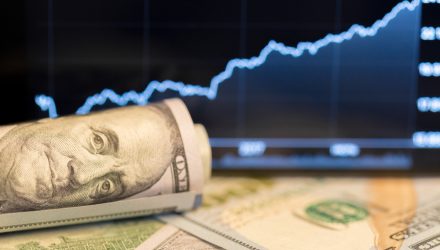A rising dollar could portend to a global slowdown as investors pile into safe haven assets like the U.S. dollar amid headwinds like rising inflation and lower economic growth.
“A surging U.S. dollar signals for some the clearest sign of an ebbing money tide and an abrupt slowdown of the world economy over the remainder of 2021 at least,” a Reuters article says. “Disruptions from new strains of COVID, severe goods and labour supply bottlenecks, fuel price squeezes, power outages, slowing credit growth and the gradual withdrawal of central bank liquidity have drained the post-pandemic recovery of momentum.”
In the meantime, other currencies are faltering while the dollar is “gaining across the board, up almost 5% against major world currencies since June and hitting its highest 2021 levels against the euro, yen and sterling. Such dollar surges are often both a reflector and amplifier of financial stress and have a habit of snowballing.”
Furthermore, this environment is a tricky one for fixed income investors to navigate. While they’re looking at overseas opportunities for yield, they need to get defensive and focus on quality holdings.
Getting Defensive on International Exposure
One way to stave off a global slowdown is to get defensive with ETFs like the FlexShares International Quality Dividend Defensive Index Fund (IQDE).
IQDE seeks investment results that correspond generally to the price and yield performance of the Northern Trust International Quality Dividend Defensive Index. The underlying index is designed to reflect the performance of a selection of companies that, in aggregate, possess greater financial strength and stability characteristics relative to the Northern Trust International Large Cap Index.
“The fund follows a Northern Trust index that selects dividend-paying companies in developed and emerging markets outside the U.S. Simple enough, but then the index weights the portfolio toward companies that earned the highest ‘dividend quality’ scores,” says an ETF Database analysis.
“To prevent unintentional concentrations, the methodology caps the weighting of individual securities, industry groups, sectors and regions,” the analysis adds further. “Lastly, the fund aims to match market beta — jargon used to describe how volatile performance is relative to the market. It’s another way of saying IQDF aims to be no more or less risky than the market.”
For more news, information, and strategy, visit the Multi-Asset Channel.

